Family
 My niece, Chantel Balcerzak has a knack for putting a sense of style and flair in her home. Chantel is not a trained Interior Designer, but she might as well be, because she is so good at it. Some of the work she does reminds me of some of the DIY channel shows. I don’t know if Chantel could actually flip houses, but she could certainly be the decorator in the end. She is starting to dabble a little bit in things like changing out countertops and such, and I know she will be great at that too, because Chantel is great at everything, she sets her mind to. She recently painted a marble look on her countertops and epoxied them to seal it. They really do look professionally done!! She can truly do anything, and it amazes everyone who has seen her work. She also has a second level of her kitchen counters that goes into the family room. She is putting butcher block in that, and I can’t wait to see it.
My niece, Chantel Balcerzak has a knack for putting a sense of style and flair in her home. Chantel is not a trained Interior Designer, but she might as well be, because she is so good at it. Some of the work she does reminds me of some of the DIY channel shows. I don’t know if Chantel could actually flip houses, but she could certainly be the decorator in the end. She is starting to dabble a little bit in things like changing out countertops and such, and I know she will be great at that too, because Chantel is great at everything, she sets her mind to. She recently painted a marble look on her countertops and epoxied them to seal it. They really do look professionally done!! She can truly do anything, and it amazes everyone who has seen her work. She also has a second level of her kitchen counters that goes into the family room. She is putting butcher block in that, and I can’t wait to see it.
Chantel and her daughter, Siara Olsen work out every day during Siara’s lunch break, and Siara is so proud of how much Chantel has improved and how great she looks. Chantel started out using weights that were under 8 
 pounds. Now, Chantel has gone up in weights and no longer needs 8-pound weights for anything anymore. Sometimes, Chantel’s granddaughter, Izabella Siara Harmon (named after her aunt) joins them, and she loves the girl-time comradery…and the exercise doesn’t hurt anything either. The three of them are growing stronger every day and feeling great.
pounds. Now, Chantel has gone up in weights and no longer needs 8-pound weights for anything anymore. Sometimes, Chantel’s granddaughter, Izabella Siara Harmon (named after her aunt) joins them, and she loves the girl-time comradery…and the exercise doesn’t hurt anything either. The three of them are growing stronger every day and feeling great.
Chantel is very dedicated to God. She seeks His will for her life, and for the lives of her family, and then works to follow His leading…and she does it with peace in her heart. Chantel’s son, Jake Harman says very much the same thing about her. He tells me that she is “the best mother and friend anyone could ask for.” Jake says, “She is the greatest person to talk to about anything because she always says what you need to hear, and she always brings scripture and God into too.” It is so helpful to him to know that she has his best interests at heart, even if they don’t always agree. Jake knows that his mom loves him and his family, and that she would never lead 
 him in the wrong direction. Jake also tells me that his mom is the funniest person to pick on and probably the worst Beat Sabers player of all time. I’m sure that’s another thing Jake can and does pick on her about…which always makes being around her a blast. Jake calls his mom, “my best friend and mortal enemy, all at the same time.” I suppose that is how a lot of kids feel about their mom. Today is Chantel’s birthday. Happy birthday Chantel!! Have a great day!! We love you!!
him in the wrong direction. Jake also tells me that his mom is the funniest person to pick on and probably the worst Beat Sabers player of all time. I’m sure that’s another thing Jake can and does pick on her about…which always makes being around her a blast. Jake calls his mom, “my best friend and mortal enemy, all at the same time.” I suppose that is how a lot of kids feel about their mom. Today is Chantel’s birthday. Happy birthday Chantel!! Have a great day!! We love you!!
 President William Harrison has the distinct record of having the shortest term in office in the history of the United States…exactly one month…from March 4, 1841 to April 4, 1841. His death and the immediate swearing in of his vice president, John Tyler on April 6, 1841, made Tyler the first vice president to immediately assume the role of president after a sitting president’s untimely exit and set the precedent for succession thereafter. It is thought that his illness was caused by the bad weather at his inauguration three weeks earlier, however, on Wednesday, March 24, 1841, Harrison took his daily morning walk to local markets, without a coat or hat. Despite being caught in a sudden rainstorm, he did not change his wet clothes upon return to the White House. He first fell ill with cold-like symptoms on Friday, March 26. His aids sent for his doctor, Thomas Miller. Harrison told the doctor he felt better after having taken medication for “fatigue and mental anxiety.” He might well have recovered from the cold, flu, or pneumonia that he was sick with at first, but to further complicate matters, Miller’s notes and records, found that the White House water supply was downstream of public sewage. With that newly revealed information, the conclusion now is that he likely died of septic shock due to “enteric fever” (typhoid or paratyphoid fever).
President William Harrison has the distinct record of having the shortest term in office in the history of the United States…exactly one month…from March 4, 1841 to April 4, 1841. His death and the immediate swearing in of his vice president, John Tyler on April 6, 1841, made Tyler the first vice president to immediately assume the role of president after a sitting president’s untimely exit and set the precedent for succession thereafter. It is thought that his illness was caused by the bad weather at his inauguration three weeks earlier, however, on Wednesday, March 24, 1841, Harrison took his daily morning walk to local markets, without a coat or hat. Despite being caught in a sudden rainstorm, he did not change his wet clothes upon return to the White House. He first fell ill with cold-like symptoms on Friday, March 26. His aids sent for his doctor, Thomas Miller. Harrison told the doctor he felt better after having taken medication for “fatigue and mental anxiety.” He might well have recovered from the cold, flu, or pneumonia that he was sick with at first, but to further complicate matters, Miller’s notes and records, found that the White House water supply was downstream of public sewage. With that newly revealed information, the conclusion now is that he likely died of septic shock due to “enteric fever” (typhoid or paratyphoid fever).
When Tyler took over, not everyone was happy about it. Tyler was a loyal supporter and advocate of states’ rights, including regarding slavery, and he adopted nationalistic policies as president only when they did not infringe on the powers of the states. His unexpected rise to the presidency posed a threat to the presidential ambitions of Henry Clay and other Whig politicians, and left Tyler estranged from both of the nation’s major political parties at the time. It was quite a predicament. When Tyler vetoed his fellow Whigs’ attempt to reestablish the National Bank, most of his cabinet resigned and he was thrown out of the Whig Party. What a  shock that must have been!! Tyler had already lost the support of the Democrats by denouncing Andrew Jackson’s policies as well, so Tyler became a president without a party. He began receiving death threats from both sides and quickly earned the enmity of Congress. His four years in office were chaotic. Nevertheless, he is credited with settling Canadian border disputes with Britain and beginning the annexation of Texas. Obviously, Tyler did not win a second term.
shock that must have been!! Tyler had already lost the support of the Democrats by denouncing Andrew Jackson’s policies as well, so Tyler became a president without a party. He began receiving death threats from both sides and quickly earned the enmity of Congress. His four years in office were chaotic. Nevertheless, he is credited with settling Canadian border disputes with Britain and beginning the annexation of Texas. Obviously, Tyler did not win a second term.
In 1844, during a cruise down the Potomac aboard the newly commissioned steam frigate USS Princeton, Tyler himself narrowly escaped death when the ships state-of-the-art cannon, called the Peacemaker, exploded as the crew fired a celebratory salute. The accident killed several people aboard, including two members of Tyler’s cabinet and his future wife’s father. Tyler was married twice. His first wife, Letitia Christian passed away in 1842, and he married Julia Gardiner in 1844. Between his two marriages, Tyler produced 15 children. Tyler’s unexpected ascendance to the presidency and the near-miss aboard the Princeton earned him the nickname of His Accidency.
After leaving the White House, Tyler retired to a Virginia plantation, originally named Walnut Grove (or “the Grove”), located on the James River in Charles City County. He renamed it Sherwood Forest, in a reference to the folk legend Robin Hood, to signify that he had been “outlawed” by the Whig Party. Tyler tried to broker a peace convention between the North and South on the eve of the Civil War, but he failed to reach an agreement with Abraham Lincoln on key issues. Denounced as a traitor by the North, Tyler fell in line with southern secessionists and, in 1861, was elected to the Confederate House of Representatives. Tyler suffered from poor health throughout his life. He was susceptible to colds and that got worse as he got older. On January 12, 1862, 
 after complaining of chills and dizziness, he vomited and collapsed. Despite treatment, his health failed to improve, and he made plans to return to Sherwood Forest by the 18th. As he lay in bed the night before, he began suffocating, and Julia summoned his doctor. Just after midnight, Tyler took a sip of brandy, and told his doctor, “Doctor, I am going”, to which the doctor replied, “I hope not, Sir.” Tyler then said, “Perhaps it is best.” He died shortly thereafter, most likely due to a stroke. He was 71. His death occurred on January 18, 1862. Tyler’s death was the only one in presidential history not to be officially recognized in Washington, because by then, his allegiance was to the Confederate States of America.
after complaining of chills and dizziness, he vomited and collapsed. Despite treatment, his health failed to improve, and he made plans to return to Sherwood Forest by the 18th. As he lay in bed the night before, he began suffocating, and Julia summoned his doctor. Just after midnight, Tyler took a sip of brandy, and told his doctor, “Doctor, I am going”, to which the doctor replied, “I hope not, Sir.” Tyler then said, “Perhaps it is best.” He died shortly thereafter, most likely due to a stroke. He was 71. His death occurred on January 18, 1862. Tyler’s death was the only one in presidential history not to be officially recognized in Washington, because by then, his allegiance was to the Confederate States of America.

 In May 1607, about 100 English colonists settled along the James River in Virginia to found Jamestown, which became the first permanent English settlement in America. Things were not going well for the settlers because of famine, disease, and Native American attacks. Then, 27-year-old English adventurer John Smith, began to directed survival efforts and mapped the area. Smith was exploring the Chickahominy River in December 1607 along with two colonists, when they were captured by Powhatan warriors. At the time, the Powhatan confederacy consisted of around 30 Tidewater-area tribes led by Chief Wahunsonacock, known as Chief Powhatan to the English. In the attack, Smith’s companions were killed, but he was spared and released. The reason, according to a 1624 account by Smith, was because of the dramatic intercession of Pocahontas, Chief Powhatan’s 13-year-old daughter. Pocahontas either had an aversion to the attacks that her people carried out on the settlers, or she could see the writing on the wall where the settlers were concerned, and knew that they would not leave, but would rather begin to cause great hardship on the tribes, because of the attacks. Her real name was Matoaka, but she was given the nickname, Pocahontas, by her father. It is a name that has been translated variously as “playful one” and “my favorite daughter.” In 1608, Smith was made president of the Jamestown colony, but that did not improve matters to a great degree, and the settlement continued to suffer. An accidental fire destroyed much of the town, and hunger, disease, and the Indian attacks continued. Things were not looking good for the settlers. Pocahontas did what she could to ease the situation, often coming to Jamestown as an ambassador of her father. Sometimes Pocahontas came bearing gifts of food to help the starving settlers. She became a friend of the settlers and soon became acquainted with English ways. Unfortunately, Smith was injured from a fire in his gunpowder bag and was forced to return to England in 1609.
In May 1607, about 100 English colonists settled along the James River in Virginia to found Jamestown, which became the first permanent English settlement in America. Things were not going well for the settlers because of famine, disease, and Native American attacks. Then, 27-year-old English adventurer John Smith, began to directed survival efforts and mapped the area. Smith was exploring the Chickahominy River in December 1607 along with two colonists, when they were captured by Powhatan warriors. At the time, the Powhatan confederacy consisted of around 30 Tidewater-area tribes led by Chief Wahunsonacock, known as Chief Powhatan to the English. In the attack, Smith’s companions were killed, but he was spared and released. The reason, according to a 1624 account by Smith, was because of the dramatic intercession of Pocahontas, Chief Powhatan’s 13-year-old daughter. Pocahontas either had an aversion to the attacks that her people carried out on the settlers, or she could see the writing on the wall where the settlers were concerned, and knew that they would not leave, but would rather begin to cause great hardship on the tribes, because of the attacks. Her real name was Matoaka, but she was given the nickname, Pocahontas, by her father. It is a name that has been translated variously as “playful one” and “my favorite daughter.” In 1608, Smith was made president of the Jamestown colony, but that did not improve matters to a great degree, and the settlement continued to suffer. An accidental fire destroyed much of the town, and hunger, disease, and the Indian attacks continued. Things were not looking good for the settlers. Pocahontas did what she could to ease the situation, often coming to Jamestown as an ambassador of her father. Sometimes Pocahontas came bearing gifts of food to help the starving settlers. She became a friend of the settlers and soon became acquainted with English ways. Unfortunately, Smith was injured from a fire in his gunpowder bag and was forced to return to England in 1609.
With Smith no longer in charge, relations with the Powhatan deteriorated. The attacks continued, and many settlers died from famine and disease in the winter of 1609-10. The settlers were about to give up and go back to England…thereby abandoning Jamestown, when Baron De La Warr (also known as Delaware) arrived in June 1610 with new supplies. It was just in time, and the settlers began to rebuild the settlement. The Delaware River and the colony of Delaware were later named after Baron De La Warr. John Rolfe also arrived in Jamestown in 1610 and two years later cultivated the first tobacco there, introducing a successful source of livelihood that would have far-reaching importance for Virginia.
Still, things were far from perfect in the rea. In the spring of 1613, English Captain Samuel Argall took Pocahontas hostage, hoping to use her to negotiate a permanent peace with her father. Seriously, kidnapping a man’s daughter is hardly the way to make peace. Pocahontas was taken to Jamestown, where she was put under the custody of Sir Thomas Gates, the marshal of Virginia. The good news was that Gates treated her as a guest rather than a prisoner and encouraged her to learn English customs. She converted to Christianity and was baptized Lady Rebecca. After much trepidation, Powhatan agreed to the terms for her release, but by then she had fallen in love with John Rolfe, who was about 10 years her senior. On April 5, 1614, Pocahontas and John Rolfe married with the blessing of Chief Powhatan and the governor of Virginia. In this case, what might have been viewed as a marriage of convenience, was actually one of love…and of convenience. Their marriage brought a peace between the English colonists and the Powhatans, and in 1615 Pocahontas gave birth to their first child, Thomas. In 1616, the couple sailed to England. Dubbed the Indian Princess, Pocahontas proved popular with the English gentry, and she was presented at the court of King James I.
In March 1617, as Pocahontas and Rolfe were preparing to sail back to Virginia…in fact, the day before they 
 were to leave, Pocahontas died of smallpox. I’m sure Rolfe wished he had never brought her to England. She was buried at the parish church of Saint George in Gravesend, England. John Rolfe returned to Virginia and was killed in a Native American massacre in 1622. After an education in England, their son Thomas Rolfe returned to Virginia and became a prominent citizen.
were to leave, Pocahontas died of smallpox. I’m sure Rolfe wished he had never brought her to England. She was buried at the parish church of Saint George in Gravesend, England. John Rolfe returned to Virginia and was killed in a Native American massacre in 1622. After an education in England, their son Thomas Rolfe returned to Virginia and became a prominent citizen.

 People are free to call it whatever they want to, but I prefer to follow the Biblical version, in which Joseph was warned in a dream, to move his son, Jesus to Egypt, because the Pharaoh was looking for Him so he could kill Him. Joseph heeded the warning. and the family moved immediately…like in the middle of the night, while those who were a danger to him were sleeping. Thankfully Joseph heeded that dream. Just imagine our world if he had not.
People are free to call it whatever they want to, but I prefer to follow the Biblical version, in which Joseph was warned in a dream, to move his son, Jesus to Egypt, because the Pharaoh was looking for Him so he could kill Him. Joseph heeded the warning. and the family moved immediately…like in the middle of the night, while those who were a danger to him were sleeping. Thankfully Joseph heeded that dream. Just imagine our world if he had not.
There have been other people who have had dream warnings, or prophetic dreams, whether a warning or a great blessing that was coming their way. I believe that our dreams can be a matter of God talking to us. President Abraham Lincoln was one of those people who had a prophetic dream, and it has been well documented through the years, for those of us who have chosen to listen. President Lincoln had his dream on April 4, 1865, and the dream was so troubling that he actually told it to a number of people including his wife, Mary Todd Lincoln and his former law partner, Ward Hill Lamon on April 11, 1865.
According to Lamon’s recollection, President Abraham Lincoln dreams on this night in 1865 “of ‘the subdued sobs of mourners’ and a corpse lying on a catafalque in the White House East Room.” In the dream, Lincoln asked a soldier standing guard “Who is dead in the White House?” to which the soldier replied, “the President. He was killed by an assassin.” Lincoln woke up at that point. On April 11, he told Lamon that the dream had “strangely annoyed” him ever since. Ten days after having the dream, Lincoln was shot dead by an assassin while attending the theater. Abraham Lincoln was shot by John Wilkes Booth while attending a play at Ford’s Theater in Washington DC on April 14, 1865. His assassination was the only successful leg in a conspiracy that also intended on capturing or killing Vice President Andrew Johnson and Secretary of State William Seward.
Interestingly, Lincoln supposedly later insisted to Lamon that the body on display was not his own…so he, himself did not view the dream as a warning of his own death. Some historians have discounted Lamon’s account, which was first published in the 1880s, nearly 20 years after the assassination. Nevertheless, Lamon claimed to have reconstructed the incident based on notes he made in 1865. I suppose the historians believe that since neither he nor Mary Lincoln mentioned the dream right after the president’s murder, it must not have been true. I believe that it was true, and that they were in such shock, that it never occurred to them to bring it up. Still, it is well known that Lincoln was a dreamer and was apparently quite interested in the meaning of dreams and what they have to say about future events both positive and negative. Proof of his curiosity lies in an 1863 letter to his wife, who at the time was in Philadelphia with their 10-year-old son, Tad. Lincoln writes that Mary had better “put Tad’s pistol away” as he “had an ugly dream about him.” Moreover, members of Lincoln’s cabinet recalled that, on the morning of his assassination, the president told them he’d dreamed of sailing across an unknown body of water at great speed. He also apparently revealed that he’d had the same dream repeatedly on previous occasions, before “nearly every great and important event of the War.”
The Secret Service was formed as a result of that assassination, but just imagine if they had all heeded the dream warning and placed a better guard around President Lincoln. If those he told of the dream, had considered the possibility of missing the play, or posted guards around the president, how different could have been the outcome. The world will never know, because one of our greatest presidents was gone before he could finish his second term in office. Lincoln was a very popular president. In his run against Democrat, George B 
 McClellan, Lincoln carried all but three states (Kentucky, New Jersey, and Delaware), and won 55 percent of the vote. He won 212 electoral votes to McClellan’s 21, which goes to show that most of the people approved of his anti-slavery policies, as opposed to the Democrats, who wanted to keep slavery, and who fought against the slaves and minority races…and still do, even to this day.
McClellan, Lincoln carried all but three states (Kentucky, New Jersey, and Delaware), and won 55 percent of the vote. He won 212 electoral votes to McClellan’s 21, which goes to show that most of the people approved of his anti-slavery policies, as opposed to the Democrats, who wanted to keep slavery, and who fought against the slaves and minority races…and still do, even to this day.
 Samuel Finley Breese Morse was born on April 27, 1791, in Charlestown, Massachusetts, the first child of the pastor Jedidiah Morse (1761–1826), who was also a geographer, and his wife Elizabeth Ann Finley Breese (1766–1828). Samuel Morse was an American inventor and painter, having established his reputation as a portrait painter, but it was his work following his first wife’s death that would make his name a household word. Morse married Lucretia Pickering Walker on September 29, 1818, in Concord, New Hampshire. The couple had three children. Susan was born in 1819, Charles was born in 1823, and James was born in 1825. Shortly after giving birth to James, she died of a heart attack on February 7, 1825.
Samuel Finley Breese Morse was born on April 27, 1791, in Charlestown, Massachusetts, the first child of the pastor Jedidiah Morse (1761–1826), who was also a geographer, and his wife Elizabeth Ann Finley Breese (1766–1828). Samuel Morse was an American inventor and painter, having established his reputation as a portrait painter, but it was his work following his first wife’s death that would make his name a household word. Morse married Lucretia Pickering Walker on September 29, 1818, in Concord, New Hampshire. The couple had three children. Susan was born in 1819, Charles was born in 1823, and James was born in 1825. Shortly after giving birth to James, she died of a heart attack on February 7, 1825.
Samuel Morse was away from home, working, when he received a few letters from  his wife, Lucretia. The first letter told him that his wife was ill and the next day, while he was packing to leave, another letter arrived, informing him that she had died. Morse rushed home, but upon his arrival, was informed that she had already been buried. It was devastating, and Morse was greatly upset with the delay in his messages. He was determined to find a better way to transmit messages. Of course, nothing could be done to change the tragic loss of Lucretia, but Morse was determined to make sure this wouldn’t happen to anyone else.
his wife, Lucretia. The first letter told him that his wife was ill and the next day, while he was packing to leave, another letter arrived, informing him that she had died. Morse rushed home, but upon his arrival, was informed that she had already been buried. It was devastating, and Morse was greatly upset with the delay in his messages. He was determined to find a better way to transmit messages. Of course, nothing could be done to change the tragic loss of Lucretia, but Morse was determined to make sure this wouldn’t happen to anyone else.
Following Lucretia’s death, Morse developed Morse code and helped to develop the commercial use of telegraphy in 1833. He also contributed to the invention of a single-wire telegraph system based on European telegraphs. By creating the  telegraph and drafting a series of dots and dashes to communicate via copper wires, 13 years after his wife died, Morse and co-developer, Charles Thomas Jackson successfully created a faster way of communicating and called it Morse Code.
telegraph and drafting a series of dots and dashes to communicate via copper wires, 13 years after his wife died, Morse and co-developer, Charles Thomas Jackson successfully created a faster way of communicating and called it Morse Code.
While Morse code was, without doubt his most important contribution to technology, his life didn’t end there. Morse did eventually find happiness again. He married his second wife, Sarah Elizabeth Griswold on August 10, 1848, in Utica, New York. The couple had four children, Samuel was born 1849, Cornelia was born in 1851, William was born in 1853, and Edward was born in 1857. Samuel Morse died in New York City on April 2, 1872. He was interred at Green-Wood Cemetery in Brooklyn, New York. By the time of his death, his estate was valued at some $500,000, which would equal about $10.8 million today.
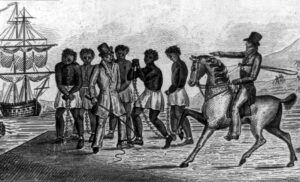
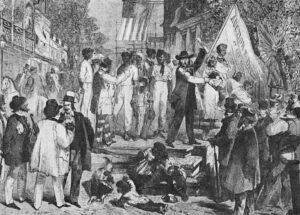 The years of slavery were awful for the African people who were sold into slavery by their own families or their countrymen. They were often stolen in the middle of the night, never to be in their homes again. Some of these slaves were young…some were even children. The terror must have been horrific. Nevertheless, it was what it was. Their life as they knew it was over. The journey to their new “home” was a hard one, and many people didn’t make it. That didn’t matter either, except in the revenue lost…they cared about that.
The years of slavery were awful for the African people who were sold into slavery by their own families or their countrymen. They were often stolen in the middle of the night, never to be in their homes again. Some of these slaves were young…some were even children. The terror must have been horrific. Nevertheless, it was what it was. Their life as they knew it was over. The journey to their new “home” was a hard one, and many people didn’t make it. That didn’t matter either, except in the revenue lost…they cared about that.
When the slaves arrived in the colonies, they didn’t have last names, or if they did, no one could really understand the last names. That didn’t matter to the slave sellers or the new master, because once sold, the slaves were given the last name of their masters, if they were given one at all. They were non-people. One must also understand that not all slaves were African. Many slaves came from Ireland too, but
I suppose it was easier to get away from their masters, because they were white too…not that they escaped, because where would they go. They were far away from their home too.
In those days, in Colonial America, slaves could win their freedom through lawsuits. I’m not sure what made them think they had a chance of winning their freedom. First of all, they had no money to get an attorney, and no attorney would have taken the case anyway. They had no way of proving their case, and what would their case have been? There was no code of conduct when it came to slaves. They could be beaten, raped, and even killed by their master. They could be overworked, under fed, and punished at will. There really was no case that could be made…as far as I can see anyway. As I said, there was a slim chance that a slave could bring a case, and even less chance that case. Nevertheless, even with that low chance of succeeding, winning in court meant 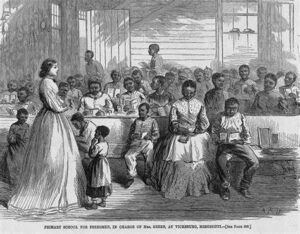
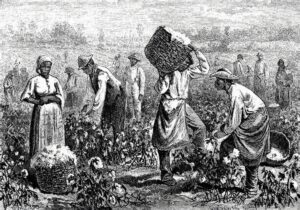 that the slave was now a citizen. They were free, and no one could dispute that again…legally anyway. The problem now was that these slaves had no last name, and they needed a last name to be a citizen. I seriously doubt they wanted to keep their master’s name. So, to solve the problem, the slaves were given the surname…Freeman. In my genealogist’s mind, there is no greater was to lose the true line of a family than such a name change.
that the slave was now a citizen. They were free, and no one could dispute that again…legally anyway. The problem now was that these slaves had no last name, and they needed a last name to be a citizen. I seriously doubt they wanted to keep their master’s name. So, to solve the problem, the slaves were given the surname…Freeman. In my genealogist’s mind, there is no greater was to lose the true line of a family than such a name change.
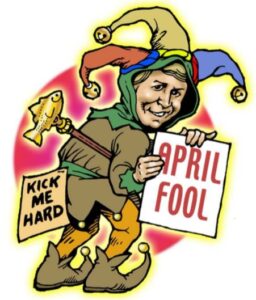
 Some historians speculate that April Fools’ Day actually dates back to 1582, when France switched from the Julian calendar to the Gregorian calendar. This wasn’t a popular change with everyone, and some people just forgot it was going to happen. Nevertheless, the Council of Trent called for it to happen in 1563. Those who accepted the change and of course, the Council of Trent were not sympathetic to those who didn’t cooperate. People who were slow to get the news or failed to recognize that the start of the new year had moved to January 1 and continued to celebrate it during the last week of March through April 1 became the butt of jokes and hoaxes. I don’t suppose that first April Fools’ Day was so fun for the victims of the hoaxes in 1563. Those people were really being ridiculed.
Some historians speculate that April Fools’ Day actually dates back to 1582, when France switched from the Julian calendar to the Gregorian calendar. This wasn’t a popular change with everyone, and some people just forgot it was going to happen. Nevertheless, the Council of Trent called for it to happen in 1563. Those who accepted the change and of course, the Council of Trent were not sympathetic to those who didn’t cooperate. People who were slow to get the news or failed to recognize that the start of the new year had moved to January 1 and continued to celebrate it during the last week of March through April 1 became the butt of jokes and hoaxes. I don’t suppose that first April Fools’ Day was so fun for the victims of the hoaxes in 1563. Those people were really being ridiculed.
With such a start, to this unique day, April Fools’ Day seems like it was really a cruel day, not the fun day we know today. Nevertheless, the idea of jokes and pranks is one that a lot of people could get onboard with…it’s almost as good as a tickle torture to make people laugh. Yes, there is a victim, but it’s all in good fun. The  English agreed, and on April 1, 1700, it began. English pranksters collectively decided to make April Fools’ Day or All Fools’ Day, as it was also called, an annual tradition by playing practical jokes on each other. It has been celebrated for several centuries by different cultures now.
English agreed, and on April 1, 1700, it began. English pranksters collectively decided to make April Fools’ Day or All Fools’ Day, as it was also called, an annual tradition by playing practical jokes on each other. It has been celebrated for several centuries by different cultures now.
Favorite pranks included having paper fish placed on the victims’ backs and being referred to as poisson d’avril (April fish), said to symbolize a young, “easily hooked” fish…basically a gullible person. April Fools’ Day spread throughout Britain during the 18th century. In Scotland, the tradition became a two-day event, starting with “hunting the gowk” (gowk is a word for cuckoo bird, a symbol for fool), in which people were sent on phony errands and followed by Tailie Day, which involved pranks played on people’s derrieres, such as pinning fake tails or “kick me” signs on them. And I thought the pranks played these days were unique.
These days, lots of people get into the action. Everything from telling someone they had a spider in their hair to the really good pranksters, who can really get their victims going. My own family, when I was a kid growing up, 
 were dedicated pranksters. Things like switching the salt and sugar were a common prank, and even used on days other than April Fools’ Day. Of course, we tried things like a spider in your hair, a rip in your jeans, and such, but we were never mean about it. So, in the end, a day which was meant to really humiliate, has turned into a prankster’s holiday, and most people are good natured about it, and simply have a few great laughs. Happy April Fools’ Day everyone. Let the pranks begin and continue!!
were dedicated pranksters. Things like switching the salt and sugar were a common prank, and even used on days other than April Fools’ Day. Of course, we tried things like a spider in your hair, a rip in your jeans, and such, but we were never mean about it. So, in the end, a day which was meant to really humiliate, has turned into a prankster’s holiday, and most people are good natured about it, and simply have a few great laughs. Happy April Fools’ Day everyone. Let the pranks begin and continue!!

 My niece, Liz Masterson is a journalism teacher for the Natrona County School District, teaching at Kelly Walsh High School in Casper, Wyoming. She is an excellent teacher and is loved by faculty and students alike. One of the perks that being a teacher has given her is summers off, and things like Spring Break, and other school holidays. That fits in quite well with Liz’s love of travel. In the working world, people get only so many vacation days a year, and I don’t know of any other occupation that gives summers off and yet pays you for a year’s work…not that teachers really get paid what they are worth (most of them anyway.) Some teachers are paid far more than their worth, unfortunately. Liz isn’t one of those, and we, her family, are all very proud of her ability, drive, and dedication. All Liz ever wanted to be was a teacher, and she is an amazing teacher.
My niece, Liz Masterson is a journalism teacher for the Natrona County School District, teaching at Kelly Walsh High School in Casper, Wyoming. She is an excellent teacher and is loved by faculty and students alike. One of the perks that being a teacher has given her is summers off, and things like Spring Break, and other school holidays. That fits in quite well with Liz’s love of travel. In the working world, people get only so many vacation days a year, and I don’t know of any other occupation that gives summers off and yet pays you for a year’s work…not that teachers really get paid what they are worth (most of them anyway.) Some teachers are paid far more than their worth, unfortunately. Liz isn’t one of those, and we, her family, are all very proud of her ability, drive, and dedication. All Liz ever wanted to be was a teacher, and she is an amazing teacher.
This week is spring break, and so Liz and her cousins, Jessi Sawdon, Lindsay Moore, and Kellie Hadlock decided that they all needed a “girl’s trip” to Las Vegas. So, they took Jessi and Lindsay’s daughters, Adelaide Sawdon  and Mackenzie Moore to stay with their grandma and grandpa, Allyn and Chris Hadlock, and then the girls took to the air, flying to Vegas. I’m sure they are having a great time, as especially since Liz’s birthday falls in the middle of their trip, it’s a great was to celebrate. Liz has traveled to, to some amazing places, like Rome and several other places near there. She has also traveled to many places in the United States. Liz loves to go to New York City, Rapid City, and places in Texas, as well as many other places in the United States.
and Mackenzie Moore to stay with their grandma and grandpa, Allyn and Chris Hadlock, and then the girls took to the air, flying to Vegas. I’m sure they are having a great time, as especially since Liz’s birthday falls in the middle of their trip, it’s a great was to celebrate. Liz has traveled to, to some amazing places, like Rome and several other places near there. She has also traveled to many places in the United States. Liz loves to go to New York City, Rapid City, and places in Texas, as well as many other places in the United States.
She has lived an interesting life for sure, but her favorite thing is her fur babies. Liz has three dogs and a cat, and they vie for her attention much of her time at home. She would love to take all three puppies for a walk, but they all want to go different directions. That just doesn’t work, so whenever Liz goes for a walk, only one dog gets to go, unless she puts them in the baby stroller that zips closed, so they can’t get out. The worst problem with that is that they love to bark at all their friends (dog friends) along the trail.

 Liz is an excellent photographer and has a side gig in photography. She has actually taken many of the senior pictures for her students. As a journalism teacher, Liz has been in charge of the yearbook at Kelly Walsh. She also takes all the sports and club pictures…and of course the graduation pictures…quite different in 2020. I don’t know how they would have ever managed the yearbook all these years without Liz’s expertise. She has been an important asset to the school and to everyone else who knows her. Today is Liz’s birthday. Happy birthday Liz!! Have a great day!! We love you!!
Liz is an excellent photographer and has a side gig in photography. She has actually taken many of the senior pictures for her students. As a journalism teacher, Liz has been in charge of the yearbook at Kelly Walsh. She also takes all the sports and club pictures…and of course the graduation pictures…quite different in 2020. I don’t know how they would have ever managed the yearbook all these years without Liz’s expertise. She has been an important asset to the school and to everyone else who knows her. Today is Liz’s birthday. Happy birthday Liz!! Have a great day!! We love you!!
 It seems odd that the daughter of a poet would be an excellent mathematician, but each person has their own gift, and it may or may not be anything like our parents. Being the daughter of a poet, in this case, Lord Byron (George Gordon Byron), it may have seemed unlikely for Ada Byron to be a mathematician, but her mother was Lady Byron (Anne Isabella Milbanke)…a mathematician. So, there you have it…two women in the 1800s who were good at mathematics. To top it off, it was uncommon for women to go very high in education in those days, much less for the aristocrat set. Women were usually trained for things like running a household and raising children…and maybe the occasional schoolteacher.
It seems odd that the daughter of a poet would be an excellent mathematician, but each person has their own gift, and it may or may not be anything like our parents. Being the daughter of a poet, in this case, Lord Byron (George Gordon Byron), it may have seemed unlikely for Ada Byron to be a mathematician, but her mother was Lady Byron (Anne Isabella Milbanke)…a mathematician. So, there you have it…two women in the 1800s who were good at mathematics. To top it off, it was uncommon for women to go very high in education in those days, much less for the aristocrat set. Women were usually trained for things like running a household and raising children…and maybe the occasional schoolteacher.
Ada Byron was the only child of Lord and Lady Byron. He had other children, but they were born out of wedlock to other women. The truth is that Ada’s mathematical prowess wasn’t an accident…it was a calculated plan by her mother, and one to which Adad didn’t object. A month after Ada was born, her parents separated, and Byron left England forever, and caused Ada’s mother to be very bitter. He wrote a poem, commemorating the parting, four months later. The poem begins, “Is thy face like thy mother’s my fair child! ADA! sole daughter of my house and heart?” When Ada was eight years old, her father died in Greece. Ada’s mother, who had never forgiven Lord Byron for leaving, remained bitter against him, even in death. In retaliation for his unfaithfulness, she promoted Ada’s interest in mathematics and logic in an effort to prevent her from developing her father’s perceived “insanity.” Nevertheless, Ada’s mother could not curb her daughter’s curiosity about her father. She remained interested in him for the rest of her life, but probably had to keep her curiosity to herself. When Ada had children of her own, she named one of her sons Byron, after her father. She also made it clear that when she died, she was to be buried next to her father, and upon her death, her request was honored.
Ada’s childhood was a hard one, because she was often ill. Still, Ada pursued her studies with great care, and 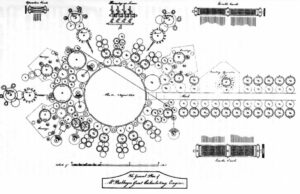 she persevered even in times of illness. I think that like her mother, she preferred logic and mathematics to poetry all along. At the age of 17 Ada was introduced to Mary Somerville, a remarkable woman who translated Pierre-Simon LaPlace’s works into English, and whose texts were used at Cambridge. Pierre-Simon, marquis de Laplace was a French scholar and polymath whose work was important to the development of engineering, mathematics, statistics, physics, astronomy, and philosophy. Though Somerville encouraged Ada in her mathematical studies, she also attempted to put mathematics and technology into an appropriate human context. It was at a dinner party at Somerville’s home that Ada heard in November 1834, about Babbage’s ideas for a new calculating engine, the Analytical Engine. His thought was, “what if a calculating engine could not only foresee but could act on that foresight?” Ada was impressed by the “universality of his ideas.” She was pretty much alone in her interest.
she persevered even in times of illness. I think that like her mother, she preferred logic and mathematics to poetry all along. At the age of 17 Ada was introduced to Mary Somerville, a remarkable woman who translated Pierre-Simon LaPlace’s works into English, and whose texts were used at Cambridge. Pierre-Simon, marquis de Laplace was a French scholar and polymath whose work was important to the development of engineering, mathematics, statistics, physics, astronomy, and philosophy. Though Somerville encouraged Ada in her mathematical studies, she also attempted to put mathematics and technology into an appropriate human context. It was at a dinner party at Somerville’s home that Ada heard in November 1834, about Babbage’s ideas for a new calculating engine, the Analytical Engine. His thought was, “what if a calculating engine could not only foresee but could act on that foresight?” Ada was impressed by the “universality of his ideas.” She was pretty much alone in her interest.
In 1835, she married William King, who was made Earl of Lovelace in 1838. With that, Ada became Countess of Lovelace. Many would think that would have been the end of her mathematical career, but Augusta Ada King, Countess of Lovelace was first an English mathematician and writer. Babbage worked on plans for this new engine and reported on the developments at a seminar in Turin, Italy in the autumn of 1841. An Italian, named Menabrea, wrote a summary of what Babbage described and published an article in French about the development. By 1843, Ada, now the married mother of three children (Byron, Anne, and Ralph) under the age of eight, translated Menabrea’s article. When she showed Babbage her translation, he suggested that she should add her own notes to the translation, which turned out to be three times the length of the original article. Letters filled with fact and fantasy flew back and forth between Babbage and Ada. In her article, published in 1843, Lady Lovelace’s prescient comments included her predictions that such a machine might be used to compose complex music, to produce graphics, and would be used for both practical and scientific use. 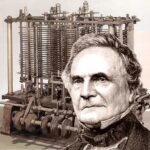 While the world thought that just wishful thinking, Ada was correct. In fact, she published the first algorithm intended to be carried out by such a machine. When inspired Ada could be very focused and a mathematical taskmaster. She suggested to Babbage writing a plan for how the engine might calculate Bernoulli numbers. This plan is now seen as the first “computer program” and as a result, she is often regarded as the first computer programmer. A software language developed by the US Department of Defense was named “Ada” in her honor in 1979. Ada Lovelace, died on November 27, 1852, after battling with Uterine Cancer. Like her father, she died young, at the same age he had…36 years old. Ada was abandoned by her husband because of cancer shortly before her death…what a creep he was!!
While the world thought that just wishful thinking, Ada was correct. In fact, she published the first algorithm intended to be carried out by such a machine. When inspired Ada could be very focused and a mathematical taskmaster. She suggested to Babbage writing a plan for how the engine might calculate Bernoulli numbers. This plan is now seen as the first “computer program” and as a result, she is often regarded as the first computer programmer. A software language developed by the US Department of Defense was named “Ada” in her honor in 1979. Ada Lovelace, died on November 27, 1852, after battling with Uterine Cancer. Like her father, she died young, at the same age he had…36 years old. Ada was abandoned by her husband because of cancer shortly before her death…what a creep he was!!
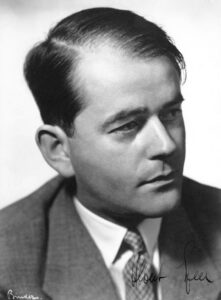 As Hitler continued his reign of terror over the people of Germany, in his quest to rule the world, he decided that he needed to destroy much of the German infrastructure so that the Allied forces couldn’t use it as they penetrated deep withing the borders of Germany. Hitler must have known by now that he was losing this war, even in his crazed state, so he was trying to find a way to turn the tide.
As Hitler continued his reign of terror over the people of Germany, in his quest to rule the world, he decided that he needed to destroy much of the German infrastructure so that the Allied forces couldn’t use it as they penetrated deep withing the borders of Germany. Hitler must have known by now that he was losing this war, even in his crazed state, so he was trying to find a way to turn the tide.
The Nero Decree (German: Nerobefehl) was the order issued by Hitler on March 19, 1945, right after the Allies captured the final bridge on the Rhine River that allowed access into Germany. The Nero Decree ordered the destruction of large numbers of bridges in Germany. The official name was Decree Concerning Demolitions in the Reich Territory (Befehl betreffend Zerstörungsmaßnahmen im Reichsgebiet), but that is rather a long name, so it became known as the Nero Decree, after the Roman Emperor Nero, who, according to an apocryphal story, “engineered the Great Fire of Rome in 64 AD.”

This act would have wiped out all of Germany’s industry and infrastructure just to keep it from falling under Allied control. Hitler didn’t care about that or about the people who would be affected. The actual task of carrying out such destruction fell to Germany’s armaments minister…and Hitler’s friend, Albert Speer. Speer knew that to follow the order would have a ruinous effect on the German people, so like Von Choltitz, who had disobeyed the order to burn Paris, Speer deliberately disobeyed the order of his friend, who he suspected was mentally unstable. In addition, Speer also issued encrypted alternate orders to delay the destruction. In the end, the Nero Decree wasn’t carried out at all, something which I’m quite certain drove Hitler totally insane.
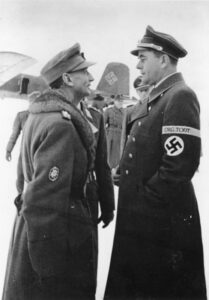
Speer was one of the highest-ranking members of German leadership to survive the war. He attempted to promote himself as someone who stood up to Hitler. While history does credit him with refusing to follow the Nero Decree, it did not completely exonerate him. Speer was an architect, and he wanted to preserve many buildings he had designed. Berthold Konrad Hermann Albert Speer, born March 19, 1905, in Mannheim, into an upper-middle-class family. He was the second of three sons of Luise Máthilde Wilhelmine (Hommel) and Albert Friedrich Speer. He was a German architect who served as the Minister of Armaments and War Production in Nazi Germany during most of World War II. He was also a close ally of Adolf Hitler, a relationship which would cause him to be convicted at the Nuremberg trials and sentenced to 20 years in prison. Speer returned to London in 1981 to participate in the BBC Newsnight program. He suffered a stroke and died in London on September 1, 1981.

